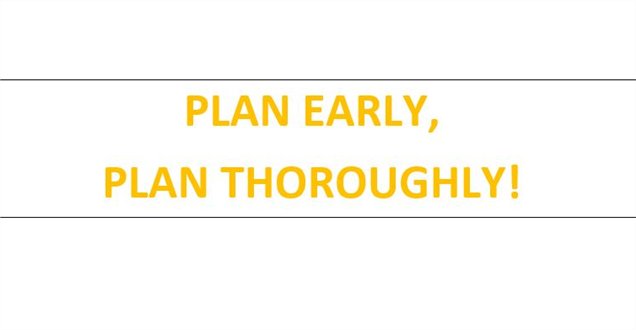Take more time to plan your web projects
...and involve your web development company as early as possible
Planning web projects takes more time than most clients allow for or consider. We sometimes get projects where the client has gone through 6 months of research or design only to leave 4 weeks to actually program the website!
We believe this is due to lack of knowledge and understanding in how complicated and time consuming bespoke programming can be, so here is a short article to help educate.
Bespoke programming is all done by hand - there is no “Ctrl+Pg” to automatically program something or create code. It takes an intelligent person who has copious amounts of experience to type out lines of code that all connect and relate to each other through a series of logical rules and statements to make a website application. In order to write these rules and statements to make the website function there needs to be a technical specification that defines in detail the desired outcome from the client brief. Most clients have no idea what a technical specification is and often send a wishy washy brief along the lines of “I want a website that will sell my product to people and ranks highly on Google.”
If you’re wanting to overhaul your website or build a new one from scratch then you need to think about everything you want and need it to do for you as a company but also for the user as your customer. The more you plan at the beginning, the clearer, potentially quicker and less scope creep you will get (which otherwise inevitably pushes the costs up).
It’s really important to have the developers to be part of the research and planning stages, so get your developer on board early in the process and then they can, at that stage, be telling you how much time they will need for the programming stage itself.
You should consider and write a brief for:
- the strategic direction of the website in terms of brand and marketing objectives
- the creative visual design of the website with regards to the brand
- the technical requirements of how and where the website will be used and viewed
- the functionality the website should have such as login areas, levels of permissions, payment portals and any other interactions you want the user to have to engage them with the website and your brand.
- the content that is going to be put on the website, what you want to be able to control, upload, edit etc.
We always recommend a client involves us from the beginning of a project (or as soon as possible) in order to help with these briefs as there is overlap from each section with regards to how the functional programming will be done in order to achieve the design, the interactions, the payment process for instance. Tagging the programming on the end is not wise and will lead to frustration on both sides and often leaving the programmer to make decisions themselves as to how something should or shouldn’t work. This often leads to bugs, errors or new feature requests and scope creep.
Scope creep is the bane of everyone’s projects, the developers don’t like the lack of clear instruction, the project managers don’t like the mediation between client and developer and the client doesn’t like the extra costs involved. If you plan thoroughly, getting the right people involved from the start and give enough time to discuss and think about the consequences before you start implementation then your project will run smoother and likely be on time and on budget. It’s also sensible to try to keep the phase of work as lean as possible (i.e. keep the website/application as simple as possible, get it delivered and working and then add more functionality in subsequent phases). This is one of the best ways to apply an agile approach in a very simple and effective manner.
Of course working in an agile way is great if you don’t know your exact requirements ahead of time and want to start quickly or think they may change frequently along the way, BUT you will also need an agile budget and/or be ruthless in what is absolutely necessary for the minimal viable product for launch. Good planning before the project starts will foresee and forewarn you of these potential hurdles, if you listen and take heed.
Blog written by Natalie Wiggins

